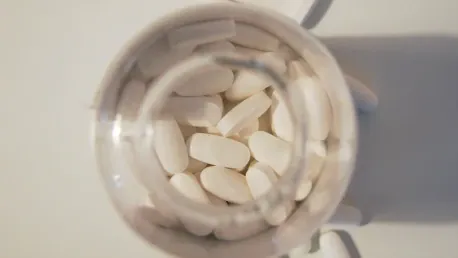The pharmaceutical industry faces significant challenges in managing the lifecycle of drugs, particularly in the area of drug safety monitoring. Traditional methods of processing safety cases are reliable but time-consuming and labor-intensive, often taking up to a week to complete. This process heavily relies on human resources and coded systems, which, despite achieving an accuracy of around 90%, still leave room for improvement in reducing errors and ensuring compliance. These traditional methods necessitate extensive manual effort and thorough reviews to ensure accuracy and adherence to regulatory standards, which further delays the process and raises operational costs. It is clear that the industry must find innovative ways to streamline these processes to maintain rigorous safety standards while improving efficiency.
The Promise of GenAI in Pharmacovigilance
GenAI promises to address these challenges by transforming pharmacovigilance through automation and precision. By integrating GenAI into established workflows, the pharmaceutical industry can shift from manual, week-long safety case processing to a streamlined, high-precision system capable of completing cases in a single day. GenAI tools can efficiently analyze vast volumes of unstructured data, such as text and voice data from call centers and literature, to detect adverse events (AEs) more rapidly and accurately. This shift minimizes the need for multiple tedious data reviews, allowing safety professionals to focus on high-value tasks and reducing the risk of missed events. Moreover, the ability to rapidly process and analyze data enhances the overall response time to potential drug safety concerns, ensuring quicker action where necessary.
An essential capability of GenAI is its proficiency in managing unstructured data from diverse sources. Safety cases often involve multilingual documents that require translation and redaction to meet privacy regulations. GenAI accelerates this process by translating, anonymizing, and structuring data for easier analysis, reducing reliance on traditional coding methods. This results in faster and more precise case processing, with data extraction rates projected to improve from the current 70% to 90-95%. The versatile nature of GenAI tools makes them invaluable in dealing with the highly variable and complex nature of pharmacovigilance data, helping to standardize and simplify otherwise cumbersome procedures. Companies can also benefit from reduced workload and enhanced compliance, as regulatory submissions can be thoroughly and quickly prepared.
Overarching Trends and Consensus Viewpoints
The overarching trend in the pharmaceutical industry is the increasing reliance on advanced technologies like GenAI to enhance efficiency and accuracy while reducing costs. There is a consensus that GenAI can significantly reduce safety case processing time, compressing it from a week to a single day. This represents an 85% decrease in processing duration, which not only speeds up the overall drug safety monitoring process but also cuts costs by as much as 50% in the coming years. Such advancements reflect an industry-wide acknowledgment of the critical role of technology in driving progress, and stakeholders are keen to leverage these capabilities to meet future demands effectively.
GenAI’s impact goes beyond cost reduction. It drives quality improvements, especially in terms of accuracy for extracted case attributes, aiming for accuracy rates above 99% through comprehensive validation processes and final human verification. Automated features such as missing data detection and follow-up field suggestions contribute to more complete and accurate cases, supporting the goal of a 99% accuracy rate. These improvements become particularly relevant in scenarios where timely and precise pharmacovigilance can prevent serious public health incidents, thereby reinforcing the industry’s commitment to maintaining high safety standards. As GenAI becomes progressively integrated, stakeholders expect higher fluidity in operations and more substantial safety coverage.
Real-World Application and Case Study
A real-world example involves a global pharmaceutical company aiming to transform its drug safety monitoring processes with the help of GenAI. The company’s traditional methods, although effective, were slow, labor-intensive, and costly. To achieve its goals of reducing case processing costs by 50% by 2027 and attaining a quality standard above 99%, the company adopted a phased GenAI-powered solution. During the initial phase, the company focused on automating core elements such as data extraction, AE detection, and multilingual data translation. GenAI’s capabilities in these areas significantly reduced manual labor and accelerated workflows, ensuring comprehensive data collection through targeted follow-up suggestions. The streamlined processes introduced immediate efficiency gains, allowing for reallocation of resources to more critical tasks.
The second phase aims to expand the role of GenAI to include generating regulatory-compliant case summaries, known as i-Narratives, with high clarity, automated outbound querying, and providing a holistic view of each case for medical review. This phased approach aims to reduce the company’s case processing time from one week to a single day, cutting costs by 50%, improving data extraction accuracy to 95%, and pushing case completion to 99%. The implementation of i-Narratives ensures that safety case summaries are not only accurate but also aligned with regulatory standards, providing clear and concise information for regulatory bodies. This real-world application illustrates the profound impact that GenAI can have, both in enhancing operational efficiency and complying with stringent safety standards.
Ensuring Robust Governance for GenAI Integration
The pharmaceutical industry increasingly relies on advanced technologies like GenAI to boost efficiency and accuracy while cutting costs. Experts agree that GenAI can drastically shorten safety case processing times from a week to just one day, an 85% reduction. This speeds up drug safety monitoring and could slash costs by up to 50% in the next few years. The industry’s recognition of technology’s crucial role in progress motivates stakeholders to adopt these advancements to meet future demands effectively.
GenAI’s benefits extend beyond cost savings, significantly enhancing accuracy in case attribute extraction. Aiming for over 99% accuracy, it employs rigorous validation processes and final human verification. Automated features like missing data detection and follow-up suggestions make cases more complete and accurate, supporting the goal of 99% accuracy. These improvements are vital in scenarios where timely, precise pharmacovigilance can avert serious public health crises. As GenAI becomes more integrated, stakeholders anticipate smoother operations and enhanced safety coverage, reinforcing the industry’s dedication to high safety standards.









